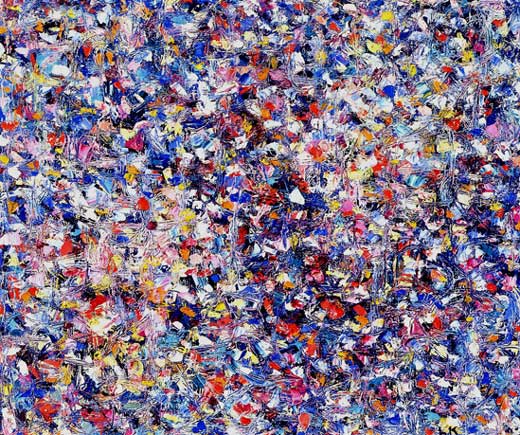 |
| Chuck Close, Big Self-Portrait, 1967-1968 Chuck Close Documentary |
Chuck Close is an American-born, Yale-educated, and photorealistic artist born in Monroe, Washington in 1940 and is still alive today. Close didn't officially begin his career until 1965 when he was 25.
Chuck Close is most well-known for doing portraits on a massive scale of close friends and family. For instance, Big Self-Portrait is about 9' X 7'. This specific piece looks like a photo but is actually a drawing using ink and pencil with incredible details. When talking about this piece Close said, "There's no question, I had some attitude about the way I wanted to be perceived." He wanted people to sort of know of his existence as an artist. He later goes on to say, "Now it seems funny wanting to look like this tough guy with a cigarette sticking out of the corner of my mouth, and a big, aggressive image of myself and saying to the viewer, 'Hey, notice my painting, notice me.'...I think I was trying to find out who I was as an artist."
Interestingly enough, this piece was done with only a half teaspoon of black paint thinned down to the same consistency as dirty water and put on the canvas with paintbrushes and an airbrush. The captivating details are created because in doing this he scraped off the paint with razor blades to depict the more rigid areas. In addition, to get the softer tones he connected an eraser to an electric drill.
When talking about details of Big Self-Portrait, Close says, "I don't want the viewer to see the whole head at once and assume that that's the most important aspect of my painting". For viewers to be able to see this as a painting and not a photograph you must stand close. If you look at this from afar you wouldn't be able to tell that it was a painting but would instead think it's a photograph.
Throughout his life, Close suffered from dyslexia and prosopagnosia (the inability to remember faces), but instead of viewing this as a disadvantage, he viewed this as his motivation to become an artist and to get better. When Close was in the process of trying to figure out how he would paint this, he thought that he should use the grid technique so that he could focus on one box at a time rather than becoming overwhelmed by the whole thing. Some would say that the grid process is similar to knitting, in that both of them go row by row. After finally completing this he states, "likeness is an automatic by-product of what I do.....the fact that it ultimately stacks up to build an image which has any relation to reality is mystifying to me."

















